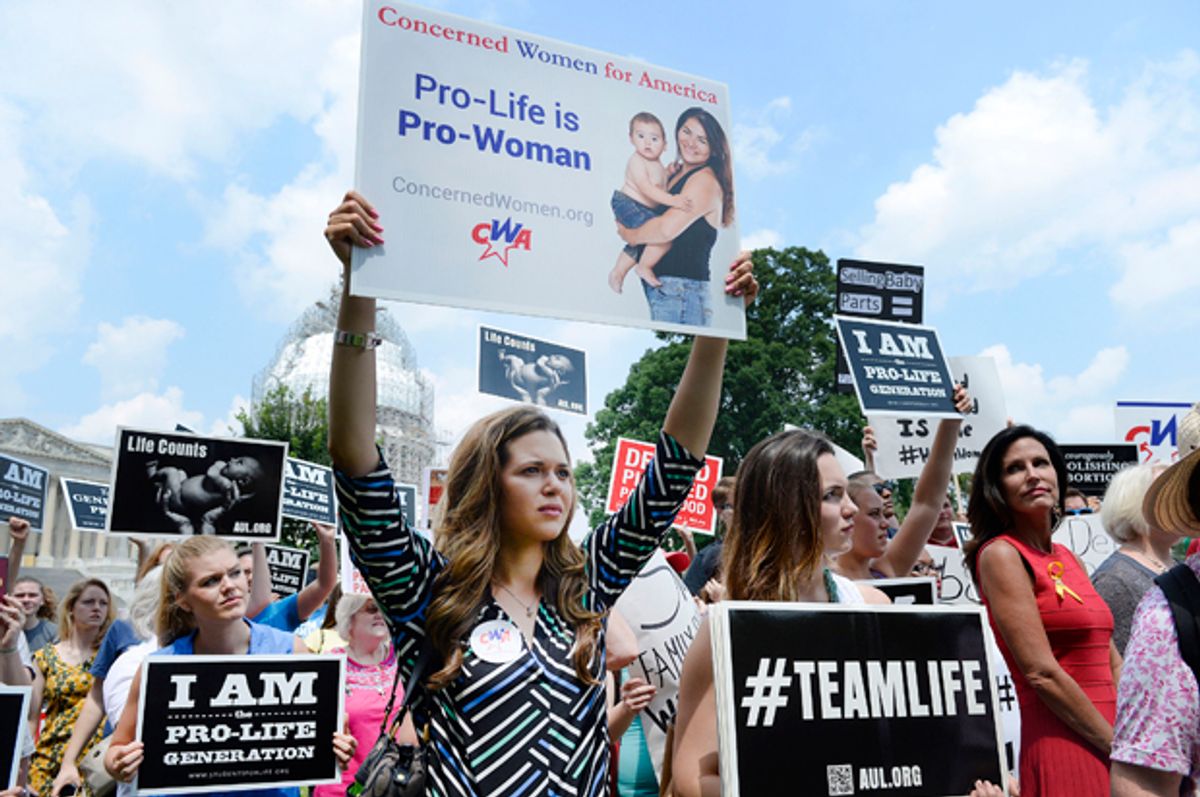This presidential election has been exhaustingly polarizing, with substantial portions of both major parties — not to mention independents — dissatisfied with the designated nominees. If our executive candidates can’t do it, perhaps Capitol Hill leaders could finally dialogue on a matter of substance and policy by solving the Planned Parenthood public funding impasse.
The abortion debate is fueled by two dueling moralities: The sovereignty of a woman’s body and the sanctity of an unborn child. By cutting off public funding for abortion services and instead expanding funding for contraception, this would strengthen both moralities. It would give women easier access to prevent unwanted pregnancies, which in turn would reduce the number of abortions.
Abortion is a highly contentious issue, however. Gallup has shown that in the years following Roe v. Wade Supreme Court ruling there has never been more than a third of Americans who supported unfettered access to abortion. Some seven in 10 Americans support at least some restrictions on abortion — a figure that has held fairly constant since 1975.


Though you wouldn’t recognize it from the left-leaning media, which doesn’t reflect the general American population, nearly half of Americans consider themselves pro-life (46 percent) and half consider themselves pro-choice (47 percent).
Give this near equal split, it seems strange that public funding for something so divisive should continue. Disagreeing with Roe v. Wade is one thing; forcibly subsidizing abortions with the public purse is another. One can disagree with using tobacco or alcohol without being forced to subsidize their consumption. Oftentimes liberals decry conservatives for what they see as legislating or forcing their morality on others; forced public payment for abortion is the selfsame act.
And then there’s the issue of misinformation from Planned Parenthood, which performs roughly a third of the estimated 1 million annual abortions in America. A new video from Live Action’s Lila Rose visually breaks down misleading Planned Parenthood’s self-preserving kabuki math on its abortion services. Planned Parenthood claims that abortions comprise just 3 percent of its health servicess. Rachael Larimore, senior editor for Slate, called the 3 percent claim "the most meaningless abortion statistic ever." The stat was also debunked by The Washington Post’s Fact Checker blog, which hit Planned Parenthood with “3 Pinocchios” for its obfuscation and lack of transparency.
“While Planned Parenthood has no legal obligation to make its data more public, it is unfortunate that the public has limited access to data about the organization,” wrote The Post’s Michelle Ye Hee Lee. “Planned Parenthood could end the speculation — and Pinocchios — by providing a more transparent breakdown of its clients, referrals and sources of revenues.”
Rose further points out that Planned Parenthood has turned from the legacy of founder Margaret Sanger, who believed that abortion was “barbaric,” and is now so heavily focused on abortion that it aborts 160 children for every one child it refers to adoption.
Even as Democrats claim that Republicans wage a “war on women” pollster (and now Trump campaign manager) Kellyanne Conway pointed out last year that among the six women Republican senators, three are pro-life and three are pro-choice. Yet 100 percent of female Senate Democrats are pro-choice. The GOP allows for ideological diversity on the question of abortion while Democrats require absolute purity, contradictory to the nuanced approach that Gallup and others tell us women actually have. A pro-life woman would be unwelcome in the Democratic fundraising machine.

All this to say that the debate about abortion is complex and won’t be solved overnight. Yet incrementally, it’s time we separate the heated debate about whether abortion should be legal to whether public money should be spent subsidizing its practice. This should be a fairly straightforward distinction to make. There’s a greater percentage of pro-life people today than a generation ago; why should half the country pay for something they find morally objectionable?
Pro-life forces haven’t been able to muster a constitutional amendment to ban the practice nor repeal Roe v. Wade; those should be separate battles beyond the current funding debate.

Shares